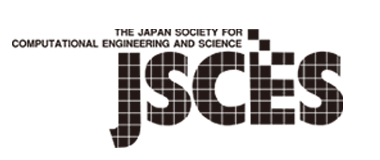The use for mathematical models of natural phenomena has underpinned science and engineering for centuries, but until the advent of modern computational methods and devices, the full utility of most of these models stood outside the reach of the scientific and engineering communities. After World War II, advances in computational methods have transformed the way of engineering and science throughout the world. Today, theories of mechanics of solids and fluids, electromagnetism, heat transfer, plasma physics, and other scientific disciplines are implemented through computational methods in engineering design, manufacturing, and in studying broad classes of physical phenomena. The discipline concerned with the application of computational methods and devices to these ends is called computational mechanics, and it has emerged as a key area of research, education, and application throughout the world.
The 15th World Congress on Computational Mechanics (WCCM-XV) & the 8th Asian Pacific Congress on Computational Mechanics (APCOM-VIII) is co-organized by The International Association for Computational Mechanics (IACM) and The Japan Society for Computational Engineering and Science (JSCES) in cooperation with the Asian-Pacific Association for Computational Mechanics (APACM) and Japan Association for Computational Mechanics (JACM).
About IACM
 The international group of scholars and practitioners of this new discipline founded the IACM to promote advances in computational mechanics. To establish the breadth of this activity IACM defines in its constitution the field of Computational Mechanics as follows:
The international group of scholars and practitioners of this new discipline founded the IACM to promote advances in computational mechanics. To establish the breadth of this activity IACM defines in its constitution the field of Computational Mechanics as follows:
For the purposes of the Association we define the subject of Computational Mechanics as the development and application of numerical methods and digital computers to the solution of problems posed by Engineering and Applied Science with the objectives of understanding and harnessing the resources of nature. While Computational Solid Mechanics (CSM) and Computational Fluid Dynamics (CFD) are at the core of our activity, such subjects as Thermodynamics, Electro Magnetism, Rigid Body Mechanics, Control Systems and some aspects of Particle Physics fall naturally within the scope of the definition. Indeed the provision of a common forum for discussion, education and research information transfer between the diverse disciplines represented is the main "raison d’etre" of the Association.
About JSCES
 WCCM III (The Third World Congress on Computational Mechanics) was held in Japan under these circumstances in August 1994. The congress proved that the new field "Computational Engineering" is one of the key interdisciplinary technologies across the specialized fields of engineering science and beyond national borders. "Computational Engineering" may contribute the solution of common problems faced by human beings, such as the global environment, energy development, the development of structures and materials and safety against disasters.
WCCM III (The Third World Congress on Computational Mechanics) was held in Japan under these circumstances in August 1994. The congress proved that the new field "Computational Engineering" is one of the key interdisciplinary technologies across the specialized fields of engineering science and beyond national borders. "Computational Engineering" may contribute the solution of common problems faced by human beings, such as the global environment, energy development, the development of structures and materials and safety against disasters.
"The Japan Society for Computational Engineering and Science (JSCES)" was founded to promote advances in education and technology in computational engineering by holding meetings among the members of JSCES and related organizations. In addition, we contribute broadly to international advancement in this field through international activities.
About APACM
 The purpose of APACM is to promote the activities related to computational mechanics in the Asian Pacific region and to represent the region's interests in the International Association. It was agreed that one of the ways by which the computational mechanics activities can be promoted in the region is to organize the Asian Pacific Congress on Computational Mechanics (APCOM) in different countries of the region at an interval of three years. The APCOM Congresses were held in Sydney, Australia in 2001, Beijing, China in 2004 in conjunction with 6th WCCM, Kyoto, Japan in 2007, Sydney, Australia in 2010 in conjunction with 9th WCCM, Singapore in 2013, Seoul, Korea in conjunction with 12th WCCM, Taipei, Taiwan in 2019. Then, the eighth will be held in Yokohama, Japan in 2022 in conjunction with WCCM-XV.
The purpose of APACM is to promote the activities related to computational mechanics in the Asian Pacific region and to represent the region's interests in the International Association. It was agreed that one of the ways by which the computational mechanics activities can be promoted in the region is to organize the Asian Pacific Congress on Computational Mechanics (APCOM) in different countries of the region at an interval of three years. The APCOM Congresses were held in Sydney, Australia in 2001, Beijing, China in 2004 in conjunction with 6th WCCM, Kyoto, Japan in 2007, Sydney, Australia in 2010 in conjunction with 9th WCCM, Singapore in 2013, Seoul, Korea in conjunction with 12th WCCM, Taipei, Taiwan in 2019. Then, the eighth will be held in Yokohama, Japan in 2022 in conjunction with WCCM-XV.
About JACM
 JACM (Japan Association for Computational Mechanics) has officially started on December 17, 2002. The purpose of JACM is to establish the communication network over the scientists related to computational mechanics. The JACM differs from ordinary society but is rather a loosely coupled union of various societies related to computational mechanics. These societies have their own members related to computational mechanics but in different area. Among them, the computational mechanics division (CMD) of JSME (Japan Society of Mechanical Engineers) is one of the largest organizations.
JACM (Japan Association for Computational Mechanics) has officially started on December 17, 2002. The purpose of JACM is to establish the communication network over the scientists related to computational mechanics. The JACM differs from ordinary society but is rather a loosely coupled union of various societies related to computational mechanics. These societies have their own members related to computational mechanics but in different area. Among them, the computational mechanics division (CMD) of JSME (Japan Society of Mechanical Engineers) is one of the largest organizations.
Use of Cookie
Websites operated by WCCM may use "cookies" to save and retrieve information about a visitor. A cookie is a small amount of text that is sent to a visitor's browser and saved on the hard disk of that visitor's own personal computer. The cookie's information is used to uniquely identify the visitor each time he/she accesses pages in a website. We do not use cookies to store a visitor's private personal information. For the sake of security, we encourage all visitors to set their browser preferences to accept cookies when visiting WCCM websites.
